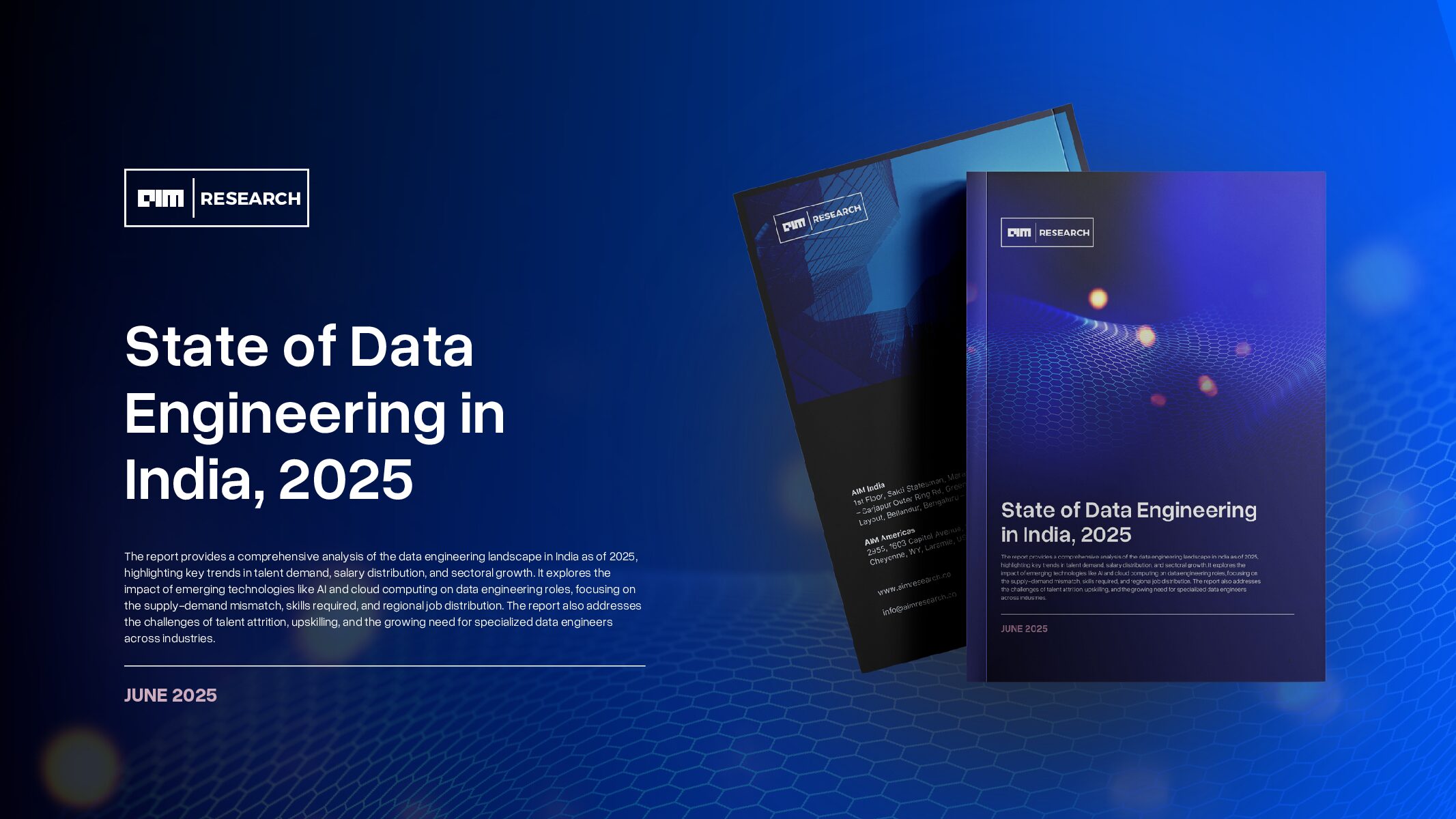In today’s dynamic digital environment, understanding the intricacies of marketing measurement and optimization is crucial for CXOs striving to drive business growth and stay competitive. In this week’s interview we have with us Sagar Ganapaneni, an esteemed expert in data science and marketing analytics, to discuss the challenges and opportunities facing CXOs in the post-cookie world. Sagar provided invaluable insights and guidance on how CXOs can adapt to the evolving landscape and leverage advanced AI methods to enhance their marketing effectiveness.
Sagar Ganapaneni is a seasoned data science leader with 12+ years’ experience in building data-driven products and driving business optimization. Currently leading data science & analytics for SMB MediaLabs at Intuit, he excels in deploying advanced analytics and AI solutions. Sagar has a strong background in economics and machine learning and has successfully scaled teams and delivered results. He actively contributes to industry standards through engagements with IAB, and MMA Global, and serves on advisory boards at Texas A&M and is a AIM Leaders Council member. Passionate about equity, Sagar mentors in forums such as KaggleX BIPOC.
Aim Research: Can you start by addressing the significance of marketing measurement and optimization for CXOs in the current business environment?
“Marketing measurement and optimization enable continuous performance improvement, allocating resources efficiently and driving meaningful business outcomes.”
Sagar Ganapaneni: Absolutely. CXOs must capture the full impact of media investments, serving as the compass for navigating the complexities of the digital ecosystem and understanding their effectiveness. Marketing measurement and optimization enable continuous performance improvement, allocating resources efficiently and driving meaningful business outcomes. In an era of evolving consumer behaviors and privacy concerns, robust measurement strategies are essential for CXOs to stay ahead of the curve, embracing data-driven approaches and leveraging advanced analytics to unlock new growth opportunities. Prioritizing media effectiveness allows stakeholders to make informed decisions that drive growth and maximize ROI, answering key questions such as the full impact of media investments and how to optimize them. This ensures that marketing proposals are supported by clear evidence of value so leaders can make informed budget and funding decisions.
AIM Research: What technology and policy changes should marketers be aware of and how can they prepare for them to improve customer trust and data privacy?
“By gathering and activating permissioned data, marketers can develop a unique dataset to help identify their valuable customers.”
Sagar Ganapaneni: One development will be a greater focus on implementing more sophisticated solutions when it comes to providing consumers with better consent management experiences and marketers with more robust data and technology controls for both personalized advertising and measurement purposes. By gathering and activating permissioned data, marketers can develop a unique dataset to help identify their valuable customers. The emphasis should be on implementing a robust consent management system, offering customers control and choice around how they interact with a brand and providing information in language they understand.
AIM Research: How do you determine the most suitable Key Performance Indicator (KPI) that aligns with your campaign objective?
“When selecting a KPI for campaign measurement, it’s crucial to align it with the campaign objective for accurate assessment of success.”
Sagar Ganapaneni: Metrics and Key Performance Indicators (KPIs) are often used interchangeably, but they serve distinct purposes. While both involve quantifiable measurements, a KPI specifically tracks progress toward a defined goal. For instance, in a sales context, total revenue is the KPI indicating progress toward the goal of increasing company revenue, while metrics such as lead generation, conversion rate, and customer acquisition cost provide insights into different aspects of the sales process, guiding strategies to achieve the revenue target.
When selecting a KPI for campaign measurement, it’s crucial to align it with the campaign objective for accurate assessment of success, for example for awareness campaigns, brand lift surveys offer insights into brand perception, consideration, and purchase intent. Marketing mix modeling (MMM) provides an overview of short and long-term ROI, cautioning against short-term sales ROI for consideration campaigns. For the lower funnel campaign, these KPIs could be more action-oriented, such as CTR, VTR, relative lift, and incremental RIO, considering proxy KPIs and metrics when primary KPIs are not trackable is a good practice.
AIM Research: How can marketers optimize across channels while addressing blind spots in attribution?
“Through conducting incrementality experiments, marketing leaders can isolate the causal effect of campaigns and channels on outcomes, providing more accurate insights for optimization.”
Sagar Ganapaneni: Marketing leaders have a range of strategies at their disposal, and everything starts with utilizing data-driven attribution to optimize campaigns across channels. By developing a comprehensive measurement framework that integrates various tools and methodologies, they can gain a holistic view of performance. Implementing cross-channel budget allocation strategies allows them to maximize performance by making data-driven decisions on resource allocation. Through conducting incrementality experiments, marketing leaders can isolate the causal effect of campaigns and channels on outcomes, providing more accurate insights for optimization. Calibrating attribution results based on these experiments helps refine models and guides informed decisions on resource allocation. For upper-funnel awareness campaigns, utilizing methods like Brand Lift studies and tracking brand metrics ensures a balanced focus on both short-term performance and long-term brand health. Finally, investing in custom MMM to measure the overall effects of media on sales and high-level strategic spend allocation. These strategies empower marketing leaders to make informed decisions and maximize the impact of their marketing investments across channels.
AIM Research: What are the recent developments in media effectiveness measurement tools and what are the key changes marketers should be aware of?
“Marketers can no longer rely solely on traditional methods due to privacy concerns. Data-driven attribution offers real-time insights but is limited to digital channels.”
Sagar Ganapaneni: Media effectiveness measurement tools are evolving towards a more privacy-centric approach, with a shift towards data-driven attribution, incrementality testing, and media mix modeling (MMM). Marketers can no longer rely solely on traditional methods due to privacy concerns. Data-driven attribution offers real-time insights but is limited to digital channels. Incrementality experiments provide a rigorous view of causality but can be challenging to scale. MMM offers a holistic overview without user-level data but requires modeling and historical data. Marketers must adapt to these changes for accurate and privacy-conscious measurement of marketing efforts.
AIM Research: Why are more businesses showing an interest in marketing mix modeling, and what is the state of the measurement industry today?
“Measurement solutions have become more generally available, with many companies offering alternative solutions to traditional measurement techniques.”
Sagar Ganapaneni: Well, there are a few reasons for the renewed interest in marketing mix modeling (MMM). Firstly, consumers have started to expect more privacy, which has led to new government regulations. As a result, businesses are exploring new ways to track the effectiveness of their marketing campaigns, and MMM is considered to be a powerful tool in this regard. Additionally, measurement solutions have become more generally available, with many companies offering alternative solutions to traditional measurement techniques. This has allowed companies to take more control over their own data analysis, with in-house MMM solutions becoming more prevalent.
MMM is a great solution for businesses looking to measure the impact of campaigns on sales, brand awareness, and more. It’s a flexible tool that can measure a variety of outcomes and drivers in the same analysis, providing marketers with valuable insights into their marketing effectiveness. However, one criticism of MMM is that results often lack the detail needed to identify which tactics are most effective. To solve this, marketers need to differentiate campaigns by their objectives and measure them using relevant KPIs within an MMM.
Finally, it’s worth mentioning that while MMM is a powerful tool, it can be overwhelming for marketers who are new to the process. With so many options available, it can be challenging to find the most effective approach. Luckily, with the help of calibrating MMM output with experimentation and looking at MTA when available, marketing executives can make more informed decisions about how they balance their channel-level strategy and optimize campaigns and tactics. While this calibration approach isn’t yet common practice, with more open source development in the space, it could become the norm sooner than we think.
AIM Research: Considering the evolving landscape of targeting and personalization, what are some emerging innovations/trends?
“Media networks streamline targeting across channels, while clean room technologies enable secure data collaboration for precise measurement and attribution. “
Sagar Ganapaneni: Emerging trends in personalization and measurement encompass data partnerships, media networks, and cleanroom technologies. These strategies redefine targeting and measurement approaches, offering access to diverse datasets while maintaining privacy standards. Media networks streamline targeting across channels, while clean room technologies enable secure data collaboration for precise measurement and attribution. These trends empower marketers with enhanced accuracy, tailored experiences, and deeper insights for data-driven decision-making in the digital landscape.
Aim Research: With the growing importance of advanced AI methods in marketing, how do you see Generative AI impacting marketing measurement and optimization strategies in the post-cookie era?
“It enables dynamic pricing strategies based on individual customer profiles, potentially boosting conversion rates and revenue.”
Sagar Ganapaneni: Generative AI offers exciting possibilities for improving marketing measurement and optimization in the post-cookie era. It can create realistic content for various marketing purposes, aiding in personalized content creation at scale and addressing attribution challenges by generating synthetic data. Furthermore, it enables dynamic pricing strategies based on individual customer profiles, potentially boosting conversion rates and revenue. However, ethical considerations regarding bias and transparency must be carefully managed. Despite these challenges, generative AI has the potential to revolutionize marketing strategies, helping CXOs navigate the evolving digital landscape and drive sustainable business growth.
Aim Research: Parting thoughts on how companies and CXOs can ensure success in advancing their marketing optimization and measurement journey?
“It’s about experimenting with small changes, continuously improving through structured testing, and involving everyone in the decision-making process.”
Sagar Ganapaneni: Democratizing data is all about making it accessible and understandable for everyone in the organization, fostering a culture where decisions are driven by data. We achieve this by using tools that allow everyone to visualize key performance indicators (KPIs) and regularly checking how our campaigns are performing. Transparency is key—we openly share our progress across the organization and prioritize data-driven decisions over gut feelings. We embrace imperfections and view mistakes as opportunities to learn and grow. This is where the test-and-learn mindset comes into play. It’s about experimenting with small changes, continuously improving through structured testing, and involving everyone in the decision-making process. In the end, this approach enables us to achieve higher ROI, make more informed decisions, and cultivate a culture of continuous learning and growth.























